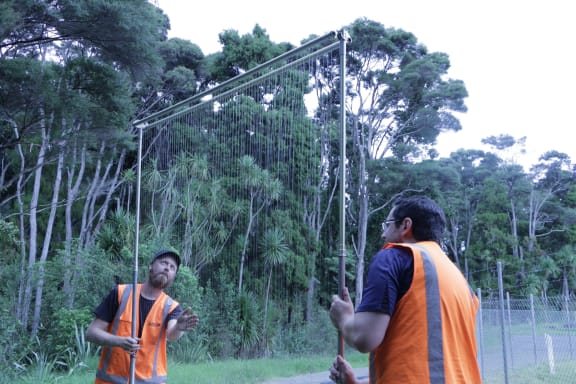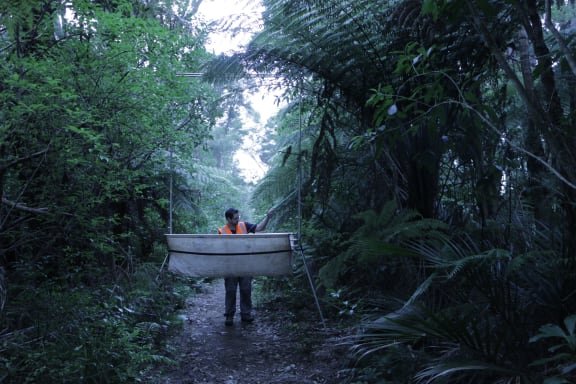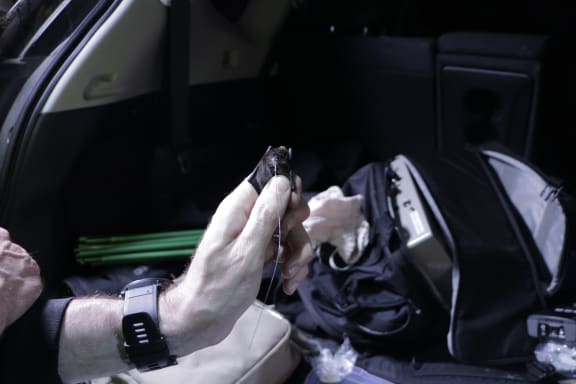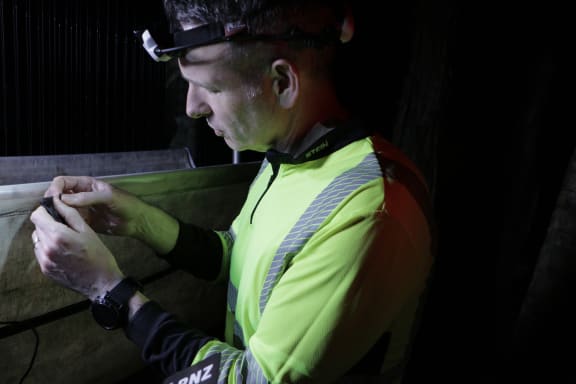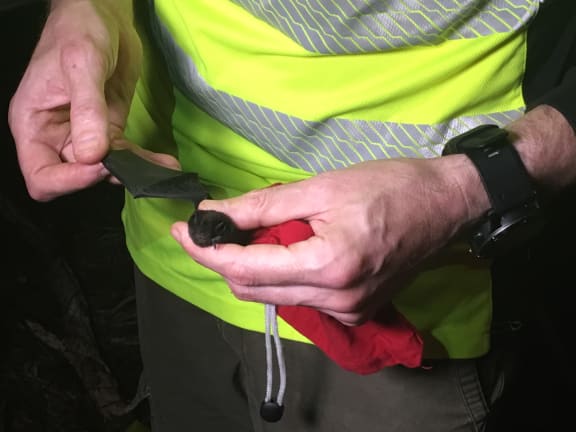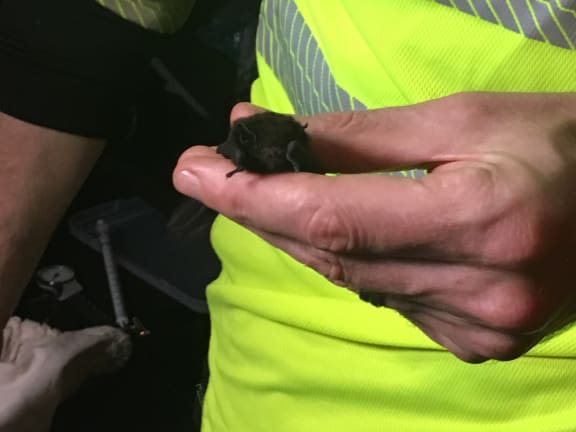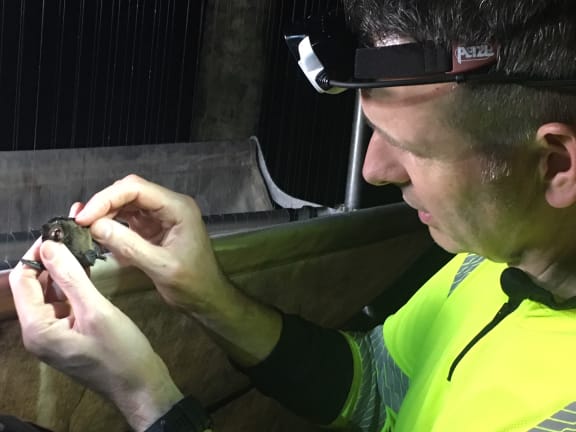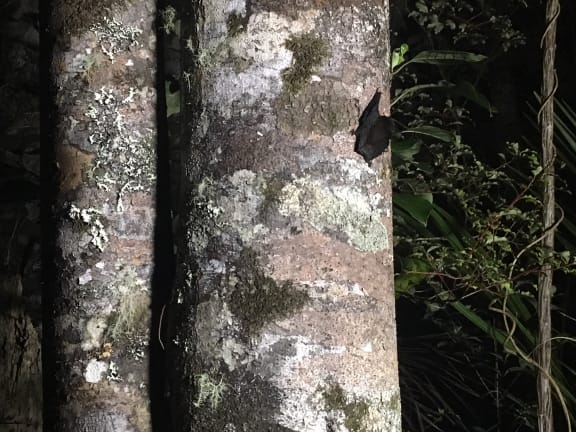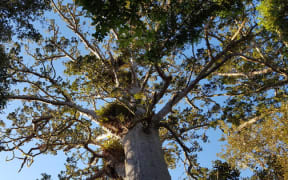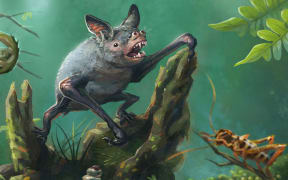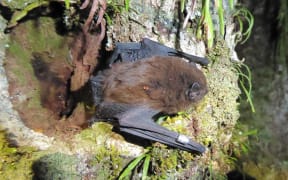You might not expect to find native long-tailed bats at the end of a dead-end road, deep in Auckland's bush-clad west. But if you live near the Waitākere Ranges, one of New Zealand's rarest creatures is living in your backyard.
For four nights over the last week, a team of bat experts and volunteers has been camping out in the bush, trying to catch and track some native long-tailed bats to find out more about where they're going.
Because of the rāhui over the Waitākere Ranges area the research team has special permission from the local iwi, Te Kawerau ā Maki, to carry out their work in the bats' habitat: the kauri forests.
The two-year project, which is still in its early stages, is all about getting a better idea of where the bats are feeding, breeding and sleeping, how far they're travelling, and how they might respond to threats like urban expansion and kauri dieback disease.
Bat researcher Ben Paris said no one really knows just how many long-tailed bats are living in the area, and the last time any research was conducted was a decade ago.
"We've had bats pop up in suburban Swanson and Henderson, so we know that they are travelling quite long distances out from the Waitākere Ranges," Mr Paris said.
"That's part of the tracking, we want to make sure we know where they're going and what sort of routes they're using."
But to do that, they need to catch some bats and attach radio transmitters - which is not an easy task.
Because bats are social creatures, pretend bat calls are played as a lure.
The so-called harp traps are set up in places where the experts think the bats could be hanging out.
Two layers of fishing line are suspended from a large metal frame, with a large, canvas catching bag below it. The fishing line is too fine for the bats' echolocation to see.
"They'll probably dodge through the first set but hopefully not the second, and then they'll just fall gently into the catching bag at the bottom," Mr Paris said.
The people watching the traps then settle in to listen to their bat detectors and wait for a bat to be caught.
In the first three days of trapping and tracking, they had caught just one bat, Mr Paris said, but on Monday night, the team did not have to wait long.

Ian Davidson Watts with a long-tailed bat. Photo: RNZ / Sarah Robson
It was just before 8.30pm when the shout went up that a bat had been caught.
Ian Davidson Watts, who has been researching bats in New Zealand and the UK for years, had the honour of getting the bat out of the trap.
The one-year-old female was measured and weighed and a tracker was attached to her with glue that will fall off after a couple of weeks.
Because the bats are no bigger than a man's thumb, the trackers have to be very small and therefore have just a small battery inside them - which doesn't last long.
After the bat had been released, Mr Paris went back to check the other traps and discovered another bat had been caught.
"Second bat of the night is awesome, this site was a bit hit and miss, we didn't really know what was going to be happening, but two bats from the same site in such a short period of time - totally exciting," he said.
The second bat was also a juvenile male.
"That shows that both sexes are here, so they could be breeding around now."
The bat researchers are hoping to be back in November, for another round of trapping and tracking.
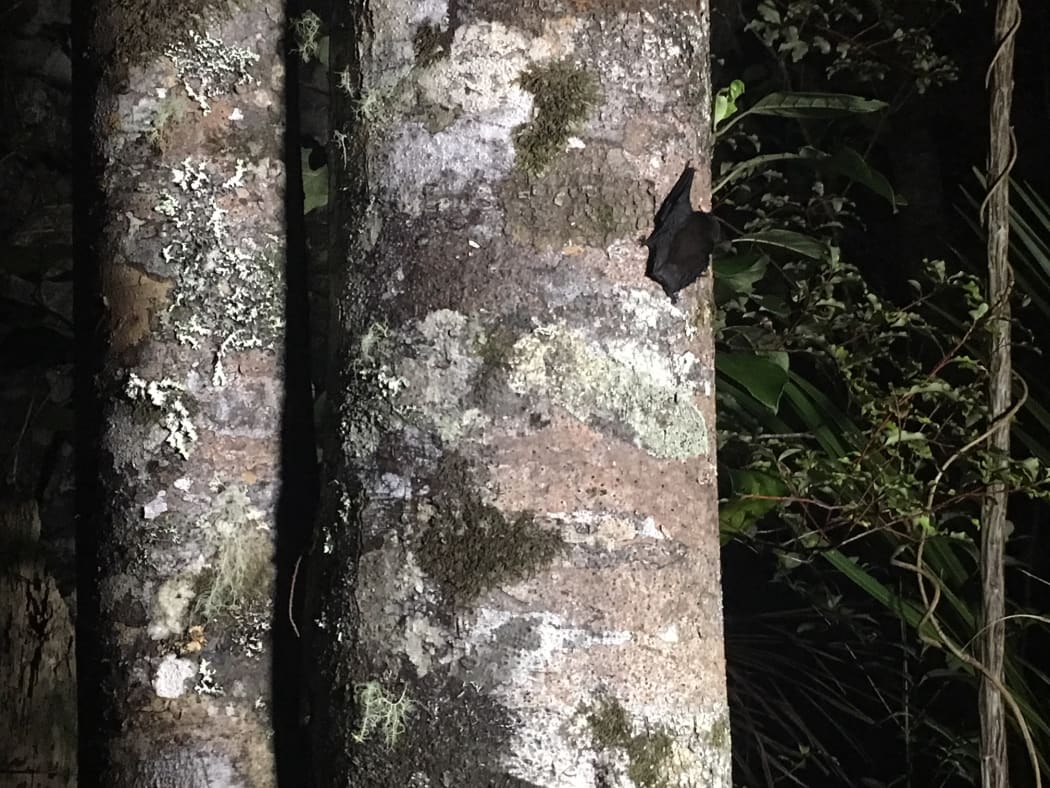
A long-tailed bat is freed to a kauri tree after being trapped and tagged by researchers. Photo: RNZ / Sarah Robson

